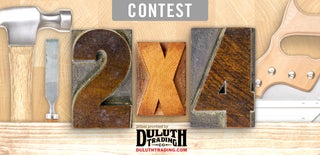Introduction: Flexible Shelf
Today i'll be showing you how i made my flexible shelf! It's based on a shelf design called "Chuck by Natascha Harra-Frischkorn.
I've taken quite a few different approaches on the design just for ease of fabrication.
Let's get started!
Step 1: Bill of Materials.
- 2 meter flat bar (35mmx 6mm)
- M12 Steel rod (You'll need about 1 meter) (not pictured)
- 4mm MDF or Plywood (I had the hardware store rip the sheet down to strips 15cm by 240cm.
- Some scrap plywood or hardwoord ( I used a scrap piece of 2by4 milled down. )
- M10 x 70mm screws and plugs ( I used Bolt headed screws)
- Primer and paint of your choice
Step 2: Creating the Support Hooks
We'll be creating the support hooks out of the flat bar.
Use a propane torch to heat the steel and bend it using a vice to 90°.
Make a U shape that is approximately 15cm High and 20cm at the bottom.
During bending, leave the flat bar as long as you possibly can, it will give you more leverage and you'll be able to perfectly size it afterwards!
We'll need 2 of these hooks!
Step 3: Mounting Holes
Time to drill the morning holes.
Drill 2 8mm holes in the back leg of your U shapes, We'll use these to screw the shelve to the wall
Then lay out the bottom 2 holes. These will provide some material which prevent your shelves from dropping out.
I spaced mine out about 5 cm from each other in the middle of the U shape's bottom part.
Step 4: Welding the Screw Rods
Time to weld the screw rods in place. Make sure that they are parallel to each other.
I used a full weld on the bottom and 1 "tack" on the tom side.
My welding is very bad, but i've never taken any lessons nor do i have much experience.
But hey, it get's the job done!
Step 5: Creating Custom End Caps.
We need to make sure our shelves don't fall out of the holders.
I simply superglued some big washers on some M12 nuts. If you're a better welder than me, you would probably want to weld these on.
Step 6: Priming
After grinding and cleaning up the metal it's time to prime the pieces for paint!
Step 7: Hook Covers!
Since my metal working skills aren't good looking i'll be creating some covers to make it look clean.
Use a router to cut out a channel out of your plywood or hardwood.
Use miter cuts to create a snugly fitting C shape. These will only be held in place by friction so make sure your measurements are precise!
Step 8: Creating the Shelves
I've played out my shelves to have about 14 cm of moving space on each end. Make sure you space the slots at an ecual distance as you've just welded you're M12 rods. These 2 need to fit!
Once you've drawn your measurements out on the shelves start by drilling holes on the ends of each grove. Then proceed to use a jigsaw to connect the holes with each other.
My cutouts look very clumsy, i should have used the router to make these cuts look clean and professional.
Step 9: Painting!
Spraypaint all of your pieces in your desired color. I'm using a makeshift dryer oven to speed up the process!
Step 10: Finished!
When all your components are dry, it's simply a manner of putting it all together.
Thanks for reading and make sure to leave a comment if you liked this project or if you do have some questions!
Have a good one!

Runner Up in the
Living Without Closets Contest

Participated in the
Before and After Contest 2016

Participated in the
2x4 Contest

Participated in the
Full Spectrum Laser Contest 2016













